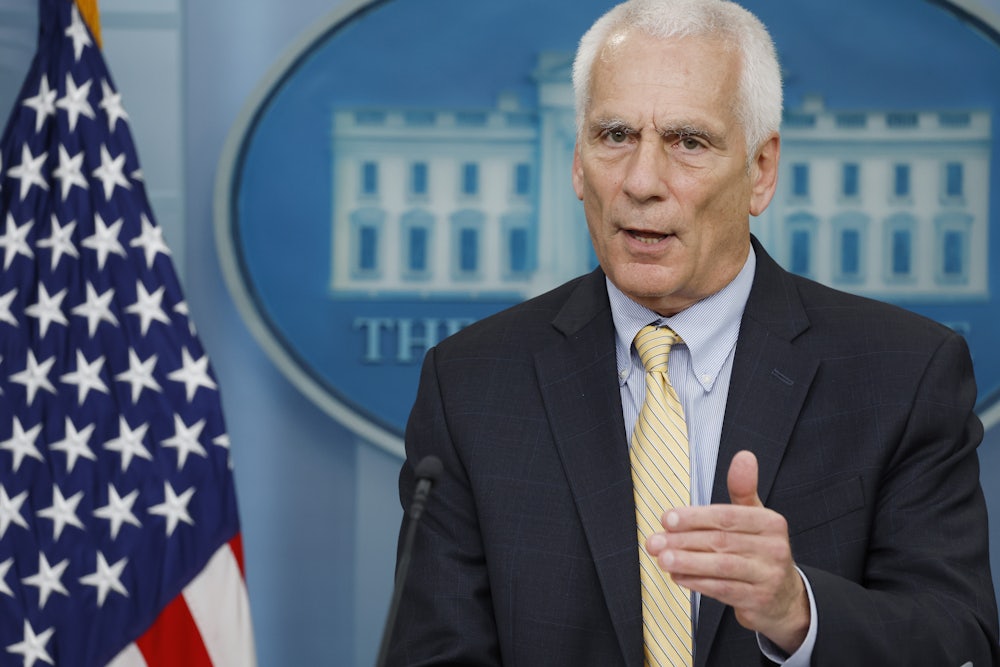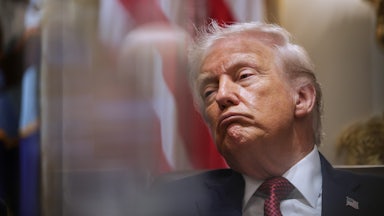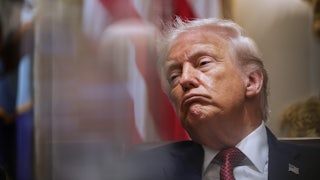This has not been a campaign season characterized by high-minded new approaches to economic policy, so when Donald Trump mentioned the idea of a sovereign wealth fund earlier this month in a speech to the Economics Club of New York, it kind of flew past me. “We’ll create America’s own sovereign wealth fund,” Trump said, “to invest in great national endeavors for the benefit of all of the American people. Why don’t we have a wealth fund? Other countries have wealth funds. We have nothing.”
Perhaps I ignored this because Trump spent more time discussing what he wanted to call it (“We can name it something different.… We’ll name it something that’s appropriate”) than clarifying how it would actually work. According to Trump, it would be funded “through tariffs and other intelligent things,” and the money would be spent, as he put it, to
build extraordinary national development projects and everything from highways to airports and to transportation, infrastructure, all of the future. We’ll be able to invest in state-of-the-art manufacturing hubs, advanced defense capabilities, cutting-edge medical research, and help save billions of dollars in preventing disease in the first place.
The idea of a sovereign wealth fund has been kicking around for a while, among both liberals and conservatives, and my guess is Trump threw it out so he could sound somewhat brainy in front of an audience of policy wonks. (Note his self-conscious use of the word “intelligent.”) The Biden administration is quietly considering a sovereign wealth fund too, with national security adviser Jake Sullivan holding weekly meetings about it with his deputy, Daleep Singh. Policy documents have been circulating in the White House, according to Bloomberg’s Josh Wingrove, though apparently not to Jared Bernstein, chairman of the Council of Economic Advisers. “It’s certainly something I haven’t talked about in meetings,” Bernstein told Wingrove, and pronounced himself “very wary” of the idea.
I’m with Bernstein—and not only because, should Trump win the election, he’d probably use it to pay his legal bills. A sovereign wealth fund is a worthy idea in theory, but the United States is poorly positioned to create one because it’s $35 trillion in debt, requiring annual payments of $1 trillion just to cover the interest, and running an annual budget deficit of $1.5 trillion. Opinions vary about how serious a problem this is, but it’s very much the opposite of a budget surplus, which is what a country typically must have in order to create a sovereign wealth fund. Countries with sovereign wealth funds usually have some resource (most often oil and gas) that’s gushing revenue faster than the government knows how to spend it.
Kuwait started the first sovereign wealth fund in 1953 to manage proceeds from its oil reserves. Botswana started a sovereign wealth fund in 1993 to manage proceeds from diamond extraction. China started a sovereign wealth fund in 2007 to manage excess proceeds from its stupendously rapid industrialization. Some countries use the money as a rainy-day fund. Others use it to cushion their economy from volatility in the oil markets. (We do something similar with our Strategic Petroleum Reserve.) Still others use a sovereign wealth fund to finance economic development. Here in the U.S., some individual states have sovereign wealth funds, the biggest and best known being the Alaska Permanent Fund, established in the 1970s after construction of the trans-Alaska oil pipeline. The Alaska Permanent Fund distributes an annual dividend to Alaskans of about $1,600. What nations and states with sovereign wealth funds have in common is more revenue than they can (or wish to) spend on government services.
The U.S. government is not blessed with that problem. The last time this country had a budget surplus, in 2000, President George W. Bush quickly pissed it away (and then some) with a series of reckless tax cuts. The U.S. doesn’t lack tangible assets from which it might generate significant revenue—the main one is land that the federal government owns out West—but it manages these very poorly, charging below-market rates (and sometimes nothing at all) for mining rights, oil leases, and grazing fees. Remember Cliven Bundy? He’s a Nevada cattle rancher who, starting in 1993, refused to pay grazing fees. When the tab reached $1 million in 2014, the Bureau of Land Management started impounding Bundy’s cattle, only to be chased off by armed protesters. The BLM hasn’t been back since. You might call the uncollected fees a sort of unofficial sovereign wealth fund dedicated to the perpetuation of the Bundy Ranch.
In his 2014 book With Liberty and Dividends for All, Peter Barnes added to these American natural resources various types of intangible “co-owned wealth,” including the electromagnetic spectrum, intellectual property protection, the right to pollute, and “fractional reserve banking” (i.e., the right to hold in reserve only a designated fraction of bank deposits). In the latter case, as I noted last week, the Federal Reserve attempted to impose on too-big-to-fail banks a 20 percent increase in required capital reserves. These are banks that you and I had to bail out after the 2007 financial crisis and will have to bail out again after the big banks stumble into the next big crash. The banking giants, led by Jamie Dimon of J.P. Morgan, told the Fed more or less what Bundy told the BLM, and the Fed scaled back its proposed regulation to require only a 9 percent increase in required capital reserves. This is why we can’t have nice things.
Barnes’s book was a stirring manifesto that proposed the federal government charge fees to businesses that extract wealth from public resources in amounts that reflect those resources’ actual value, and distribute the proceeds to Americans. Doing so could, among other things, give a badly needed boost to masses of people left behind by globalization, deindustrialization, financialization, and all the rest. Barnes’s sovereign wealth fund resembles what Matt Bruenig later described as a “social wealth fund.”
The idea, Barnes wrote, dates at least as far back as Thomas Paine, the modern era’s most congenially leftist Founder. In his last major work, Agrarian Justice, Paine wrote that there were two kinds of property: those wrought by “the invention of men” and those “which come to us from the Creator of the universe.” In the latter category, Paine included “earth, air, water,” declaring these the birthright of all. (Nearly two centuries later, Henry George would express a similar idea in Progress and Poverty.)
Paine proposed that all owners of land pay rent to the government for the privilege of possessing it and that the money be put into a “National Fund.” This fund would pay every adult American, annually, today’s equivalent of $24,000, dropping to $16,000 after he or she reached age 55. These payments, Paine wrote, would be “compensation, in part, for the loss of his or her natural inheritance, by the introduction of the system of landed property.”
But this is a strategy for a nation that knows how to collect its debts and pay its bills, as the U.S. does not. The only collective asset the U.S. knows how to mine effectively is debt. Because ours are still regarded—even after January 6!—as the world’s most reliably stable government and currency, we possess the world’s most highly prized debt, sold around the world as Treasury bonds. American debt is a luxury product coveted on par with Cuban cigars, Scotch whiskey, and Iranian caviar. When the sovereign wealth funds of other nations need someplace safe to invest, they beat a well-worn path to a Treasury auction. Uncle Sam extracts $8.3 trillion per year from his hapless insolvency by selling debt. That dollar amount dwarfs the roughly $2 trillion contribution that crude oil (after debt, our second-most-plentiful resource) contributes to gross domestic product. In a sense, the U.S. already maintains a sovereign wealth fund. But where other countries use proceeds from theirs to invest in the future, we use ours to bail out the past.










